A Women’s Embroidered Straight Kurta is a classic and versatile piece of Indian wear that combines traditional craftsmanship with a modern silhouette. The straight-cut design offers a clean, streamlined look, while the embroidery adds intricate detailing that elevates the kurta’s overall aesthetic. Here’s a breakdown of what makes this piece so stylish and functional:
Key Features:
- Straight Cut Design:
- The straight-cut kurta features a simple, vertical silhouette that runs from top to bottom without flaring at the sides. This creates a clean, tailored appearance that is flattering and comfortable.
- It is a more structured and contemporary style compared to other traditional cuts like the Anarkali or A-line, making it ideal for everyday wear, office settings, or semi-formal events.
- Embroidery:
- Embroidery is the key feature that adds texture, depth, and elegance to the straight kurta. Depending on the design, the embroidery can vary from simple to intricate:
- Threadwork: Colorful or metallic threads are used to create floral, paisley, or geometric patterns. This is often the most common form of embroidery seen on straight kurtas.
- Zari Work: Gold or silver thread embroidery that adds a touch of luxury to the kurta, perfect for festive occasions.
- Sequins/Beads: Small embellishments like sequins, beads, or mirror work can be added to enhance the embroidery, making it sparkle and shine.
- Chikan Work: A traditional form of embroidery from Lucknow, characterized by delicate, fine stitches. It’s ideal for creating a subtle yet elegant look.
- Embroidery is the key feature that adds texture, depth, and elegance to the straight kurta. Depending on the design, the embroidery can vary from simple to intricate:
- Fabric:
- The fabric of the embroidered straight kurta varies, giving it different textures and drapes. Common fabrics include:
- Cotton: Ideal for daily wear, lightweight, breathable, and comfortable for warmer weather.
- Silk: Perfect for evening wear, weddings, or festive occasions due to its luxurious look and feel.
- Rayon: Soft, fluid, and comfortable, rayon straight kurtas are a popular choice for casual wear.
- Georgette/Chiffon: Flowing and lightweight, ideal for more formal or semi-formal events.
- Linen: Breathable and perfect for the summer, linen adds a relaxed yet sophisticated vibe to the kurta.
- The fabric of the embroidered straight kurta varies, giving it different textures and drapes. Common fabrics include:
- Versatility:
- The straight kurta is incredibly versatile and can be worn for a variety of occasions, ranging from casual to formal.
- Office Wear: Pair the kurta with leggings or tailored trousers for a chic and professional look.
- Casual Wear: Wear with jeans or palazzos for a relaxed and comfortable outfit.
- Festive/Party Wear: When embroidered with more intricate designs, it can easily be dressed up for parties, weddings, or festivals. Pair with accessories like jhumkas, bangles, or a silk dupatta.
- The straight kurta is incredibly versatile and can be worn for a variety of occasions, ranging from casual to formal.
- Styling Options:
- Bottoms: Depending on the occasion and personal style, the straight kurta can be paired with leggings, churidar, palazzos, or even straight trousers for a clean and chic look.
- Footwear: The footwear can vary based on the occasion. For a casual look, you can pair it with ballet flats, sandals, or jutis. For formal events or evening wear, block heels, stilettos, or mules are perfect.
- Accessories: A simple embroidered straight kurta pairs well with minimalist jewelry, such as stud earrings or a dainty bracelet. For a more elaborate embroidered kurta, you can go bold with statement necklaces or chandbalis.
- Dupatta: If the kurta is worn for a more formal or festive occasion, pairing it with a matching or contrasting dupatta can add an extra layer of elegance.
- Colors and Variations:
- Light and Subtle Colors: Soft pastels like mint green, blush pink, or sky blue often feature subtle embroidery, perfect for a day out or office wear.
- Bold and Rich Colors: Darker shades like maroon, navy blue, emerald green, or mustard are great for evening wear, weddings, or festivals, especially when paired with intricate embroidery.
- Monochromatic Embroidery: Some kurtas feature embroidery in the same color as the fabric, giving it a subtle, tone-on-tone effect.
- Contrasting Embroidery: Bold, contrasting colors in the embroidery can make the kurta stand out, giving it a more statement-making appeal.
- Occasions:
- Workwear: The straight-cut embroidered kurta is ideal for office wear, especially when paired with tailored trousers or a simple dupatta.
- Casual Outings: Wear with leggings or palazzos for a comfortable, chic look for a brunch, shopping trip, or casual gathering.
- Festive or Wedding: If the embroidery is more detailed or features heavy embellishments, the kurta can be worn to weddings, receptions, or festivals.
- Evening Events: A straight embroidered kurta in silk or georgette with intricate embroidery makes for a sophisticated choice for evening parties or gatherings.
Styling Tips:
- Layering: If the kurta has subtle embroidery, you can layer it with a light dupatta or jacket for added style.
- Minimalist Jewelry: If the embroidery is bold, keep the jewelry simple. A pair of studs or a delicate bangle is often enough.
- Belts: To cinch in the waist and add a modern twist, you can add a slim belt over the kurta.
- Hair: For a polished look, go with soft curls or a neat bun, especially if you’re wearing the kurta for a formal occasion.
The embroidered straight kurta offers a wonderful blend of tradition and modernity, making it a perfect wardrobe staple for a variety of occasions. Whether it’s for a casual day or a festive evening, this piece is an elegant and versatile choice.
Let me know if you’re looking for more specific suggestions or want help finding the perfect one!
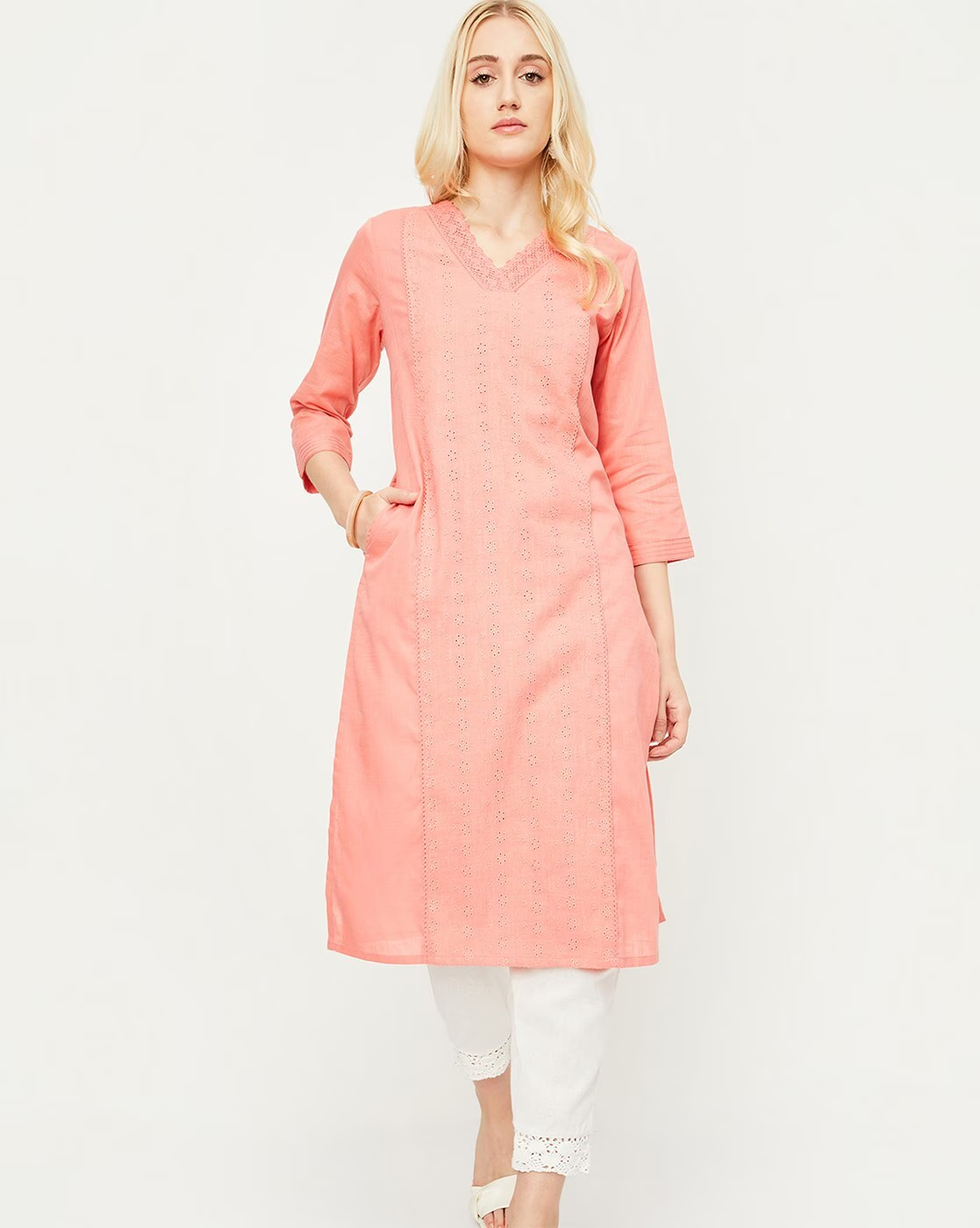
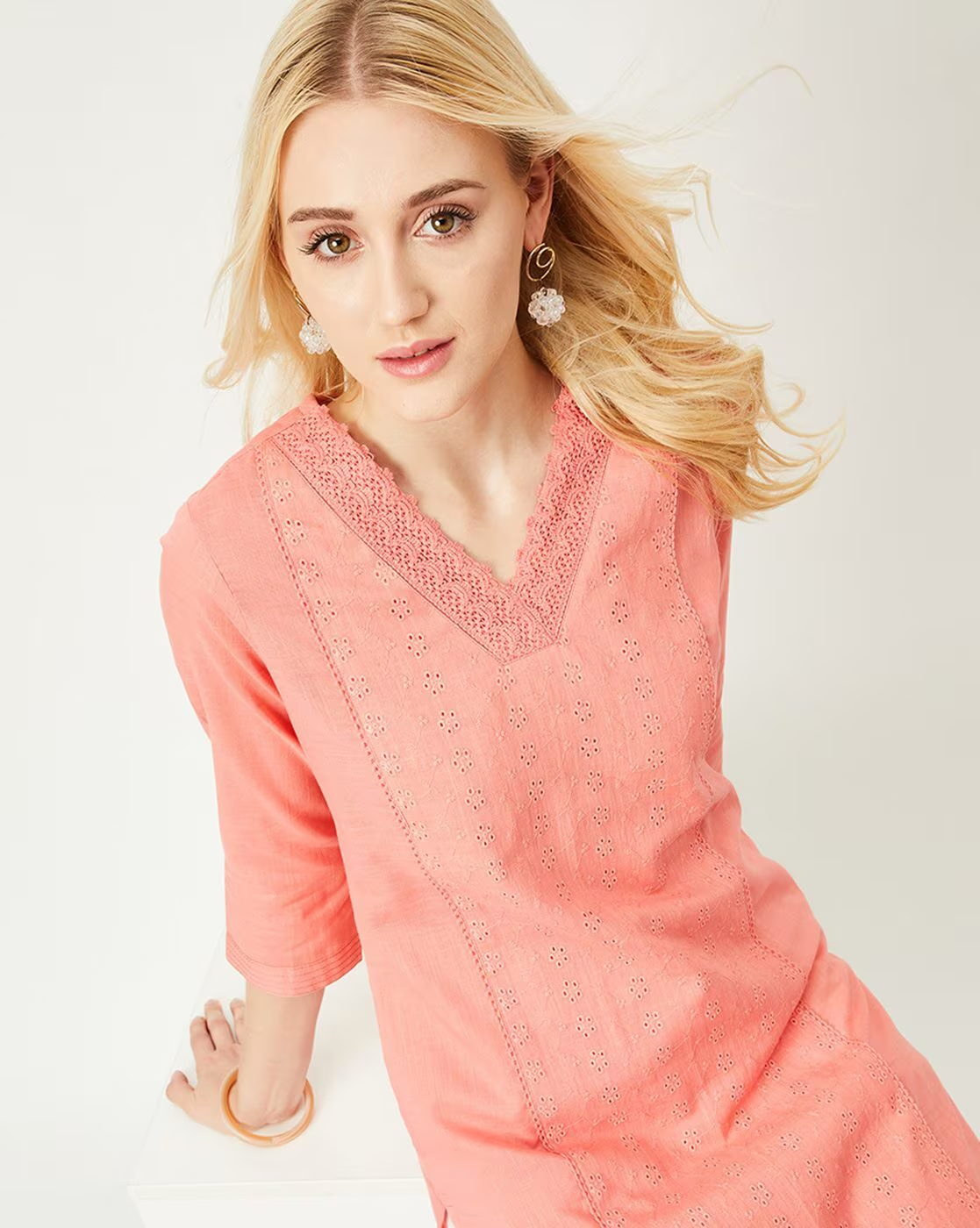

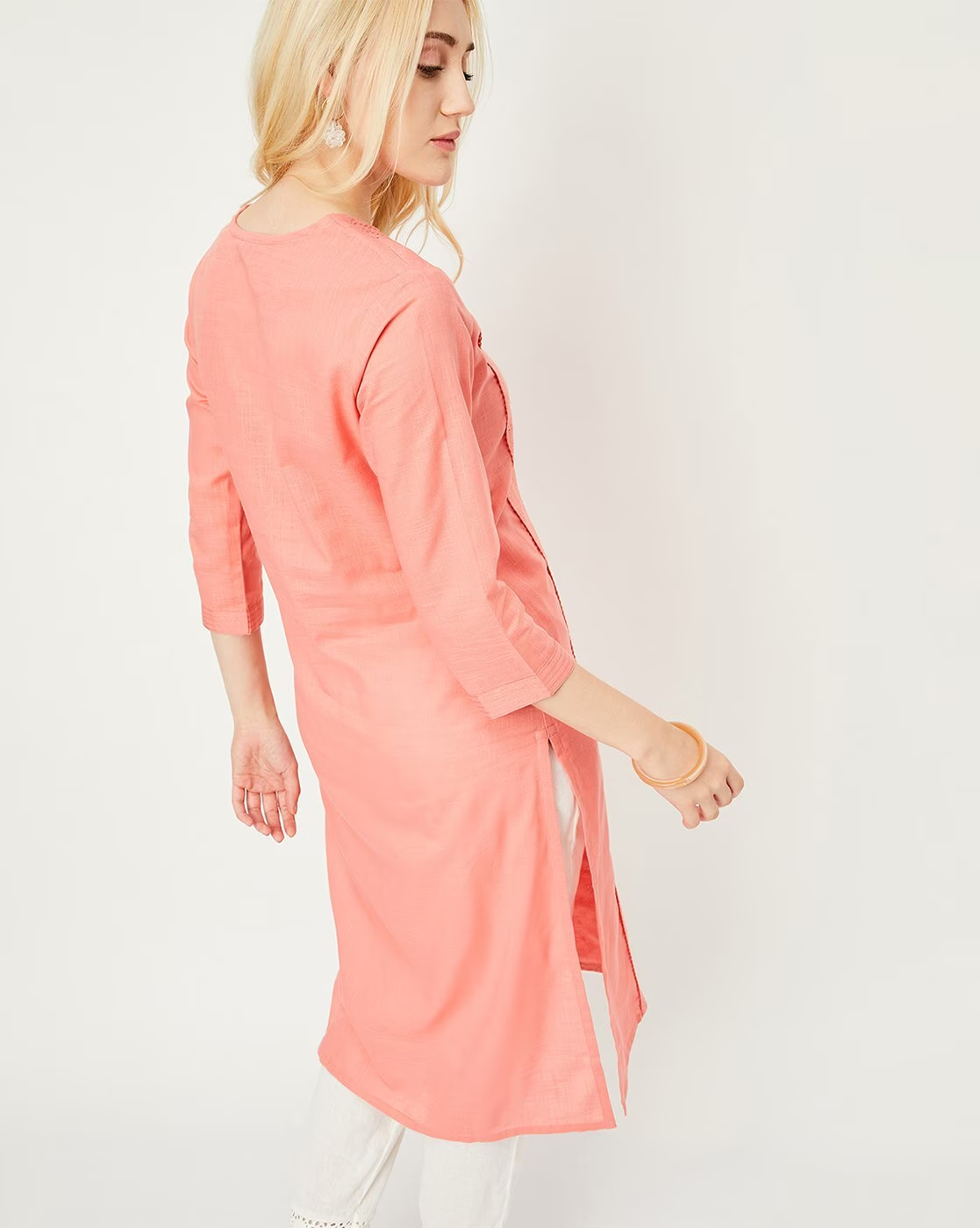
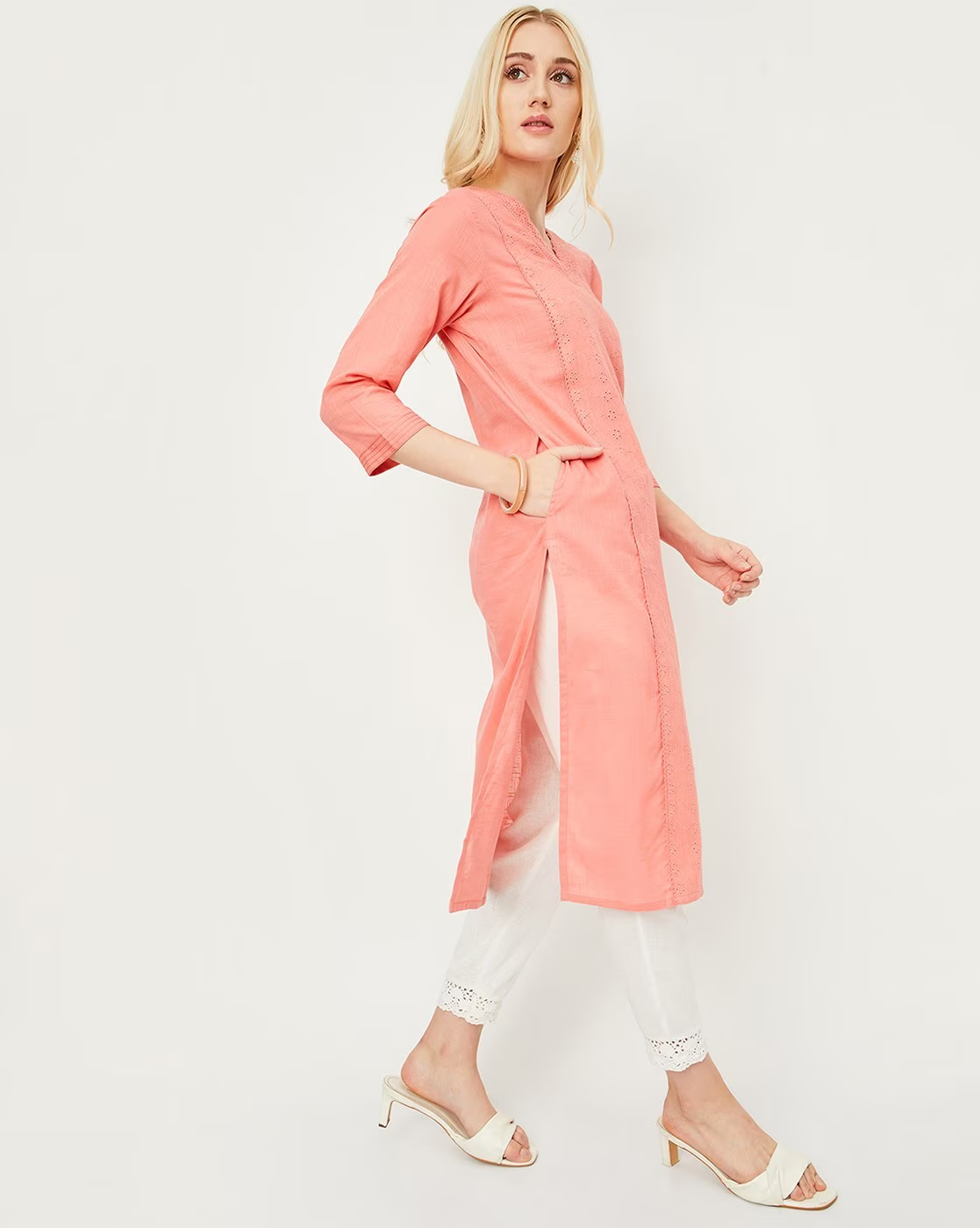
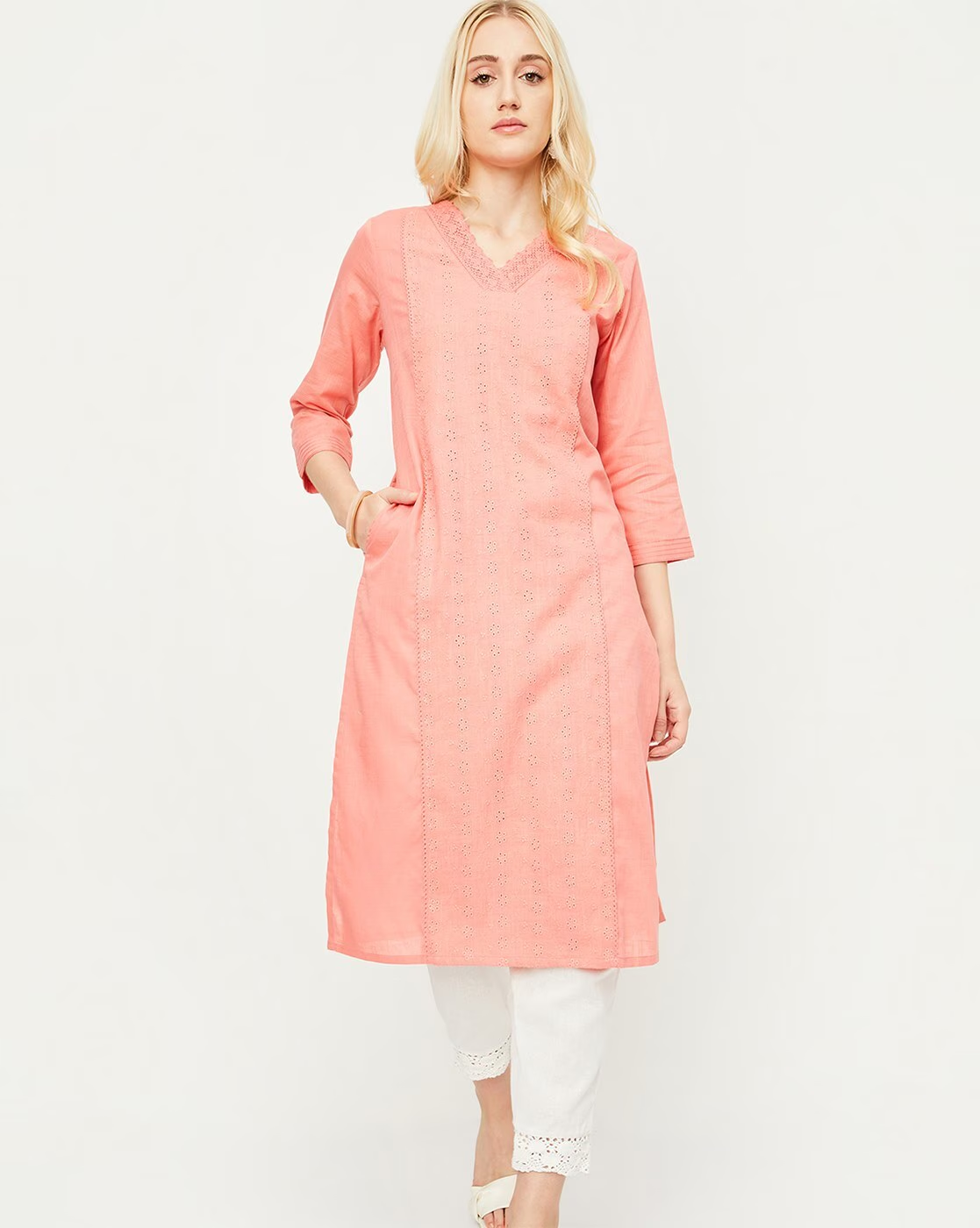

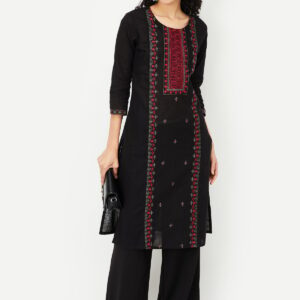
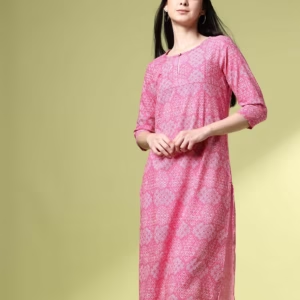
Reviews
There are no reviews yet.